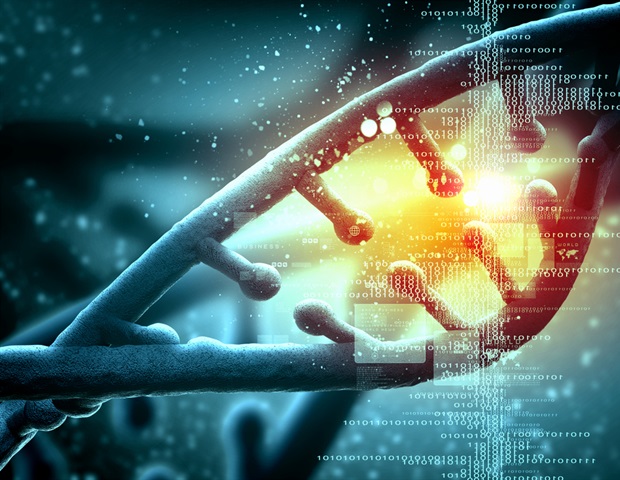In a recent study published in PNAS, researchers evidenced the presence of severe acute respiratory syndrome coronavirus 2 (SARS-CoV-2) in the human brain, infecting astrocytes and impairing neuronal function and viability.
Background
Of all the extrapulmonary effects reported in coronavirus disease 2019 (COVID-19) patients, the most pronounced symptoms involve the central nervous system (CNS). Some of the long-term complications beyond four weeks of acute SARS-CoV-2 infection are neuropsychiatric. In the affected patient population, cognition and neurological impairment are consistent with substantial damage to the CNS. A previous study demonstrated the presence of SARS-CoV-2 ribonucleic acid (RNA) for as long as three months after the acute stage in patients exhibiting neurological symptoms. Further, these patients had altered cerebral cortical regions and axonal injuries and suffered from a loss of white matter.
Recently, studies have also evidenced the presence of SARS-CoV-2 proteins in brain regions of COVID-19 patients. SARS-CoV-2 infection can cause astrogliosis, microgliosis, and immune cell accumulation in the human brain. Also, SARS-CoV-2 can cross the blood-brain barrier (BBB), as seen in mice models, and infect human brain organoid cells in vitro.
Despite a growing body of evidence for neurological and neuropsychiatric symptoms in COVID-19 patients, there is a lack of understanding of molecular mechanisms governing SARS-CoV-2 brain infection and its subsequent impact on human brain structure and function.
About the study
In the present study, researchers analyzed the brain tissue samples of 26 individuals who died of COVID-19 using a minimally invasive autopsy via endonasal transethmoidal access. They used histopathological signs of brain damage as a guide for possible SARS-CoV-2 brain infection. Additionally, the researchers investigated living patients and preclinical in vitro and ex vivo models.
Further, they performed a cortical surface-based morphometry analysis on 81 subjects with mild COVID-19 within an average of 57 days after SARS-CoV-2 detection by quantitative reverse transcription-polymerase chain reaction (qRT-PCR). For this analysis, the researchers had a control group comprising 81 healthy volunteers without neuropsychiatric comorbidities.
Furthermore, the team assessed episodic verbal memory, sustained attention, alternating attention, and cognitive flexibility in a subgroup of 61 participants. They also conducted a liquid chromatography-mass spectrometry (LC/MS) proteomic analysis on 12 postmortem brain samples from COVID-19 patients and eight SARS-CoV-2–negative controls. Lastly, the researchers’ cultured neural stem cells (NSC)-derived neurons in a conditioned medium where SARS-CoV-2–infected astrocytes could propagate.
Study findings
In vitro experiments showed that NSC -derived human astrocytes were susceptible to SARS-CoV-2 infection through a non-canonical mechanism that involved spike (S)–neuropilin-1 (NRP1) interaction. These astrocytes also showed changes in energy metabolism and key metabolites used to fuel neurons and in the biogenesis of neurotransmitters. Notably, infected astrocytes secreted yet unidentified factors that led to neuronal death.
Furthermore, the conditioned medium increased the apoptosis rates by 22.7% in NSC-derived neurons. The possibility of neuronal infection was ruled out as SARS-CoV-2 RNA was not detected in either cell type after exposure to the conditioned medium, and direct exposure to SARS-CoV-2 did not reduce the viability of NSC-derived neurons after 24, 48, or 72 hours. These results suggested that SARS-CoV-2–infected astrocytes release soluble factors, which reduce neuronal viability.
An analysis of cortical thickness revealed areas of reduced cortical thickness exclusively in the left hemisphere or the orbitofrontal region due to its proximity and communication with the nasal cavity. The neuropsychological evaluation revealed that 70% and 36% of individuals experienced fatigue and daytime sleepiness, respectively. Nearly 28% of participants presented impairments in immediate episodic verbal memory, and ∼34% and 56% underperformed on Color Trails A and B, respectively. Notably, 77% of these COVID-19 patients also presented acute anosmia or dysgeusia, likely related to the observed cortical thickness changes.
Histopathological analysis revealed alterations consistent with necrosis and inflammation in five of 26 brain tissue samples. These five samples also had SARS-CoV-2 RNA and S protein. Since SARS-CoV-2 preferentially infects astrocytes, of the 656 differentially expressed proteins, astrocytes expressed the highest. Also, the LC/MS analysis of SARS-CoV-2–infected astrocytes showed significant changes in metabolic intermediates of glycolysis, including pyruvate and lactate. Together, these results demonstrated a reduction in those metabolites produced by SARS-CoV-2–infected astrocytes that supported neuronal metabolism and function.
Conclusions
Astrocytes are the main energy reservoirs of the brain, essential for brain homeostasis, and also play a crucial role in protecting brain cell damage triggered by pathogenic infections or sterile inflammation. The current study results suggested that anxiety and depression symptoms were also partially associated with SARS-CoV-2 infection. In vivo findings indicated cortical atrophy, neuropsychiatric symptoms, and cognitive dysfunctions in the brain tissue of COVID-19 patients. Interestingly, patients with mild COVID-19 also exhibited cortical atrophy in the superior temporal gyrus, previously described in a group of patients with severe SARS-CoV-2 infection.
Thus, the study raised the possibility that neuroinvasion observed in fatal COVID-19 cases could be operative in mild COVID-19. Therefore, COVID-19 therapies should encompass ways to prevent SARS-CoV-2 invasion of the CNS.



_labeled_with_fluorescence_dyes-Vshivkova_9fc952884c46485589d5e3d9bff007e5-620x480.jpg)
